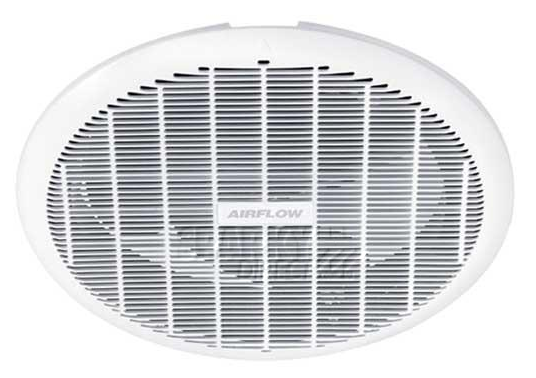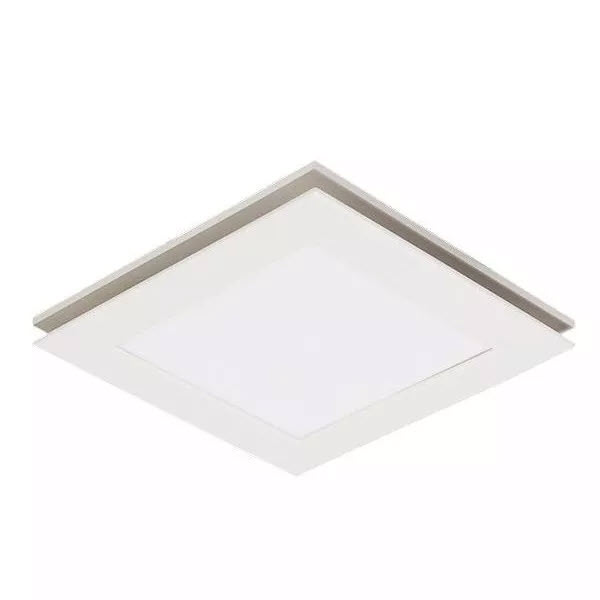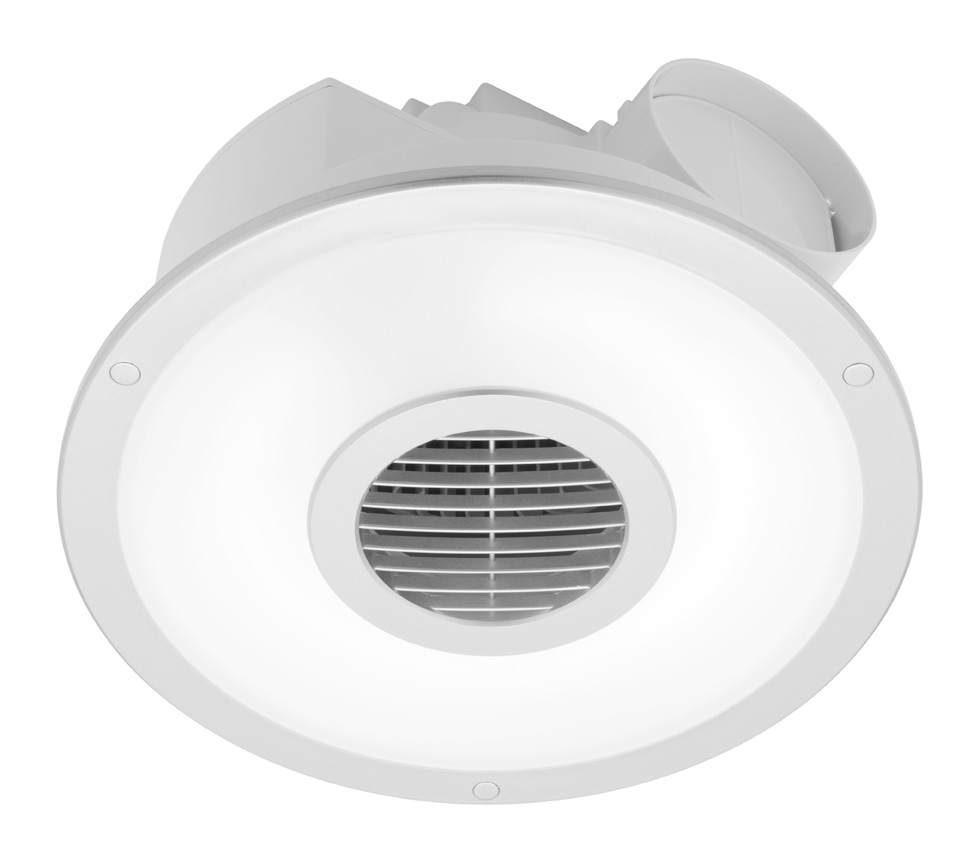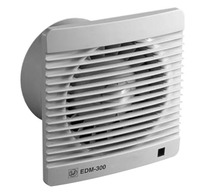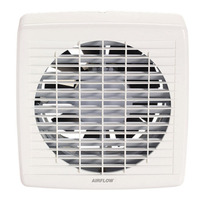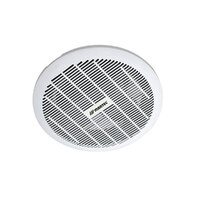Exhaust Fan
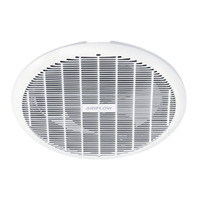
What are Exhaust Fans?
Exhaust fans are mechanical ventilation devices that remove stale air, moisture, odours, and pollutants from indoor spaces by extracting air and expelling it outdoors. They improve indoor air quality in bathrooms, kitchens, and laundries by preventing mould growth, reducing humidity levels, and maintaining fresh air circulation throughout Australian homes and commercial buildings.
▼ Table of Contents
Common Questions About Exhaust Fans
Why do I need an exhaust fan in my bathroom?
Exhaust fans prevent moisture damage by removing humid air after showers and baths. Without proper ventilation, moisture accumulates on walls, ceilings, and fixtures, causing mould growth, peeling paint, warped cabinetry, and damaged plaster. An exhaust fan reduces humidity levels quickly, preventing these costly problems whilst improving air quality.
What's the difference between ceiling and wall-mount exhaust fans?
Ceiling-mount fans are the most common type, connecting to ducts through the roof cavity or attic space. Wall-mount fans are designed for rooms where ceiling access isn't possible, venting directly through an external wall with minimal ductwork. Some models work in both configurations for installation flexibility.
How long should I run the exhaust fan after showering?
Run your bathroom exhaust fan for 20-30 minutes after showering to remove all moisture effectively. Many electricians recommend installing a run-on timer that automatically switches the fan off after a preset time. This ensures proper ventilation without wasting energy or forgetting to turn the fan off manually.
Can I install an exhaust fan myself as a DIY project?
Replacing an existing exhaust fan connected to a surface socket may be possible for DIY if the new fan has a 3-pin plug. However, any work involving direct connection to home wiring must be performed by a licensed electrician to comply with Australian electrical safety standards and insurance requirements.
Types of Exhaust Fans Available
Ceiling-Mount Exhaust Fans
Most Common Installation Type
Connect to exhaust ducts running through roof cavities or between floors. Ideal for top-floor bathrooms and single-storey homes. Available in various sizes from 200mm to 250mm diameter openings with extraction rates from 50m³/h to 300m³/h.
Wall-Mount Exhaust Fans
Direct External Venting
Designed for rooms without ceiling access or mid-level bathrooms. Vent directly through external walls with minimal ductwork required. Perfect for renovations where ceiling penetration isn't practical or for laundries and kitchens backing onto external walls.
Exhaust Fans with Lights
Two-in-One Solution
Combine ventilation and lighting in a single unit, saving ceiling space and installation costs. Popular in bathrooms where separate lighting isn't required. Available with LED or fluorescent lamps in various designs to complement bathroom décor.
Ducted Square Exhaust Fans
High-Performance Commercial Grade
Square housing design for commercial applications or larger residential spaces. Accept larger diameter ducts (150mm) for higher airflow rates. Suitable for commercial kitchens, industrial bathrooms, and high-humidity commercial environments.
Key Features & Selection Criteria
Airflow Capacity (m³/h or CFM)
Measures how much air the fan moves per hour. Higher numbers mean faster moisture removal. Match the fan capacity to your room size using the air changes calculation method for optimal performance.
Noise Level (Sones or dB)
Lower sone ratings mean quieter operation. One sone equals a quiet refrigerator. Look for fans rated 1.5 sones or less for bathrooms near bedrooms where noise matters.
Energy Efficiency Rating
Energy Star certified fans use 60% less power than standard models. DC motor fans are more efficient than AC motors, reducing running costs whilst delivering strong performance.
Duct Diameter Compatibility
Most residential fans suit 100mm or 150mm ducts. Match the fan's duct connector to your existing ductwork or upgrade to larger diameter for better efficiency and reduced noise.
Motor Type & Quality
Permanently lubricated motors require less maintenance. Ball-bearing motors last longer than sleeve bearings. Quality motors from brands like Airflow and Martec provide years of reliable operation.
Smart Features & Controls
Humidity sensors activate automatically when moisture levels rise. Motion sensors turn fans on upon entry. Run-on timers ensure proper ventilation duration after manual switching.
How to Size Your Exhaust Fan Correctly
Calculate your required fan capacity by multiplying room volume (length × width × height in metres) by the recommended air changes per hour for that room type.
Required Air Changes Per Hour
| Room Type | Air Changes Per Hour | Why This Matters |
|---|---|---|
| Bathroom with Shower | 15-25 changes/hour | High moisture from hot water requires rapid air exchange |
| Bathroom (Toilet Only) | 6-15 changes/hour | Lower moisture levels need less ventilation |
| Kitchen | 15-25 changes/hour | Removes cooking odours, steam, and grease particles |
| Laundry (With Dryer) | 15-25 changes/hour | Dryer moisture and detergent vapours need extraction |
Sizing Calculation Example
Room dimensions: 2m (length) × 2m (width) × 1.8m (height) = 7.2m³ room volume
Bathroom toilet only: 6-15 air changes per hour required
Minimum capacity: 6 × 7.2m³ = 43.2m³/h
Maximum capacity: 15 × 7.2m³ = 108m³/h
Recommended fan: Choose an exhaust fan rated between 43m³/h and 108m³/h for this bathroom. For bathrooms with showers, multiply by 15-25 instead, requiring a 108-180m³/h rated fan.
Important Sizing Tips
Don't oversize: Fans too powerful for the room create excessive noise and waste energy.
Don't undersize: Insufficient capacity means moisture lingers longer, increasing mould risk.
Consider ceiling height: Rooms with ceilings higher than 2.4m require additional capacity to properly ventilate the larger air volume.
Installation Guidelines & Requirements
Professional Installation Requirements
Electrical Connection Standards
All permanent electrical work must comply with AS/NZS 3000:2018 Australian Wiring Rules. Licensed electricians ensure proper circuit protection, correct wire sizing, and safe installation. DIY installation is only permitted when replacing plug-in models connected to existing power points.
Ducting Best Practices
Exhaust fans must vent to outdoors—never into roof cavities or wall spaces. Use insulated flexible aluminium ducting to prevent condensation. Keep duct runs as short and straight as possible. Each bend or extra metre reduces fan efficiency significantly.
External Termination
Install weatherproof external grilles or cowls to prevent rain entry and pest access. Position roof vents away from valleys where water pools. Wall vents should face away from prevailing weather to reduce back-pressure affecting fan performance.
Bathroom Fan Positioning
Install ceiling fans opposite the bathroom door to pull fresh air through the room. Position away from the shower head to prevent water spray damage. Wall fans should be mounted high on external walls for optimal air extraction patterns.
Critical Installation Warning
Never vent exhaust fans into attics, roof spaces, or wall cavities. This creates perfect conditions for mould growth and timber rot, causing serious structural damage. Building codes require direct external venting for all exhaust systems. Moisture damage from improper venting can cost thousands in repairs.
Always engage licensed professionals for ducting work to ensure compliance and prevent moisture problems.
Applications: Residential & Commercial
Residential Applications
Bathroom Ventilation
Remove shower moisture, prevent mirror fogging, and eliminate odours. Essential for mould prevention in enclosed bathrooms without windows. 200mm ceiling fans suit standard bathrooms up to 10m².
Laundry Rooms
Extract moisture from washing machines and dryers, prevent musty odours, and maintain air freshness. 250mm ceiling fans or wall-mount models provide sufficient capacity for combined laundry spaces.
Powder Rooms & Ensuites
Compact wall-mount fans suit smaller spaces without shower facilities. Lower air change requirements mean smaller, quieter fans work effectively whilst maintaining air quality and removing odours efficiently.
Kitchen Ventilation
Remove cooking odours, steam, and grease particles before they spread throughout the home. Whilst rangehoods handle stovetop ventilation, ceiling or wall exhaust fans provide general kitchen air circulation and moisture control.
Commercial Applications
Office Bathrooms & Facilities
High-usage commercial bathrooms require heavy-duty fans with stronger motors. Fantech commercial-grade models handle continuous operation and frequent use without motor failure.
Retail & Shopping Centre Amenities
Public bathrooms need powerful, reliable ventilation operating 12+ hours daily. Timer controls and occupancy sensors reduce energy costs whilst maintaining air quality during business hours and after closing.
Restaurant & Café Bathrooms
Food service venues require code-compliant bathroom ventilation to meet health regulations. Quiet operation is essential in customer-facing areas to maintain ambience whilst ensuring proper air quality.
Industrial Facilities & Workshops
Heavy-duty fans extract dust, fumes, and contaminated air from work areas. Industrial exhaust systems protect worker health by maintaining fresh air circulation and removing hazardous airborne particles continuously.
Top Brands: Airflow, Martec, Mercator & Fantech
Sparky Direct stocks exhaust fans from Australia's most trusted manufacturers—brands electricians prefer for reliability, performance, and after-sales support.
Why Electricians Choose These Brands
Clipsal Airflow
Market-leading Australian brand known for quality and longevity. Comprehensive range from compact 200mm ceiling fans to commercial-grade square ducted models. Permanently lubricated motors and robust construction ensure years of trouble-free operation. View Airflow range
Martec
Stylish designs combined with powerful performance. Saturn range offers modern aesthetics for design-conscious bathrooms. Low-noise operation with efficient motors makes Martec ideal for residential applications near living areas. View Martec range
Mercator
Specialists in combination units offering fans with integrated lighting. Skyline series provides excellent value for bathroom renovations. Energy-efficient T5 fluorescent or LED lamps reduce power consumption whilst delivering proper ventilation. View Mercator range
Fantech
Commercial-grade ventilation equipment for demanding applications. EDM series wall/ceiling fans handle high-humidity environments and continuous operation. Heavy-duty construction and powerful motors suit commercial installations. View Fantech range
Sparky Direct vs Bunnings: The Difference
Expert Product Knowledge: Our team understands commercial and residential ventilation requirements. We help electricians and homeowners select the right fan for specific applications.
Professional-Grade Range: We stock models electricians trust for reliable, long-term installations—not just entry-level consumer products.
Trade Pricing & Support: Competitive pricing for electricians, with bulk discounts available. Fast Australia-wide shipping ensures your project isn't delayed waiting for stock.
Comprehensive Accessories: We stock ducting, grilles, and timers—everything needed for complete installations.
Technical Questions Answered
What's the difference between a vent fan and an exhaust fan?
Vent fans draw fresh air into spaces, whilst exhaust fans remove stale air from rooms. In practice, bathrooms need exhaust fans to expel moisture outdoors. Fresh air enters naturally through door gaps or vents, creating proper air circulation patterns throughout the home.
How does an exhaust fan cool a room?
Exhaust fans don't cool air like air conditioners. They improve comfort by removing warm, humid air and promoting air circulation. This helps the room feel cooler by eliminating that stuffy, stagnant feeling common in poorly ventilated bathrooms and laundries.
Should I have an exhaust fan in rooms without windows?
Absolutely essential. Enclosed bathrooms without windows rely entirely on mechanical ventilation to prevent moisture damage and maintain air quality. Building codes typically require exhaust fans in windowless bathrooms to meet minimum ventilation standards and prevent mould problems.
How do I test if my exhaust fan is working properly?
Tissue test: Hold a tissue near the running fan. Proper suction should hold the tissue against the grille. If it falls away, the fan isn't creating sufficient airflow—possibly due to blocked ducts, dirty filters, or a failing motor requiring professional attention.
Shop Exhaust Fans at Sparky Direct
Trusted brands • Expert advice • Fast Australia-wide delivery • Trade pricing available
Browse Complete Range → Get Expert Advice →
